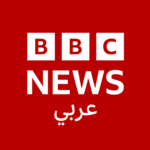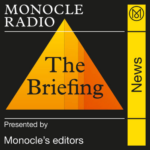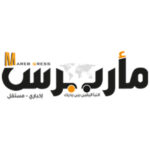|
Getting your Trinity Audio player ready...
|
Is Iran Approaching a Crucial Junction? | Immediate Intelligence Bulletin
Information:
Public protests which began in the city of Mashhad on December 28, 2017 have ignited a wave of mass demonstrations in different cities in Iran including in Tehran.
To date, reportedly 12 people have been killed during the demonstrations and hundreds arrested.
Videos show protesters attacking governmental facilities and buildings.
According to the Iranian Minister of Interior Affairs, Qasim Mohammad Jalal al-Araji, armed militants have tried to attack police and military bases.
According to sources affiliated with the Iranian opposition based outside of Iran, the public protests are expanding and gaining momentum.
In response to the demonstrations, the Iranian Mullah regime has deployed the anti-riot units of the Basij force (The Basij is an oppressive paramilitary police force in charge of public order, morality, etc. who subdued the 2009 protests), has limited access to social media platforms, and temporarily blocked access to the internet and communication platforms.
Iranian President Hassan Rouhani has officially responded by saying “people are entitled to protest yet it must be done within the frame of law.”
To date Iran’s Supreme Leader, ‘Ali Khamenei has remained silent.
Analysis:
There are similarities – yet, some distinct differences, between this eruption of demonstrations and previous ones.
The current burst of discontent and frustration is fueled by the same frustrations which ignited previous large-scale protests – including the ones that followed the elections in June 2009. People are suffocated by economic and societal challenges and are infuriated with governmental corruption and the suppression of individual rights. The lifting of the sanctions on Iran, because of The Joint Comprehensive Plan of Action (the Iran nuclear deal), generated the expectation among the public for a tangible improvement of the Iranian economy, which would positively impact Iranians everyday life. Those expectations were not met. Thus, the sentiments of disappointment and frustration deepened.
The slogans chanted by protesters today – such as “Death to the Dictator” or “Down with the Regime” have also been expressed in previous demonstrations. As have the resentments of Iranians to the aggressive regional policy of the Mullah regime. For example, in 2009 they also chanted “We will die for Iran, not Lebanon or Gaza.” This growing criticism is further fueled by the fact that the regime allocates significant resources – financial and other – to support its proxies in Lebanon, Syria, Iraq, Yemen, and the Gaza Strip. That anger is further emphasized this time due to the fact that – according official Iranian sources – more than 2,000 Iranian soldiers and officers have been killed to save Assad in the war in Syria and fighting ISIS in Iraq.
Some aspects of current protest are different from the demonstrations in 2009. One difference is the location of the outbreak of the demonstrations and the profile of the demonstrators. While in 2009, the demonstrators were primarily young people and the demonstrations were concentrated primarily in Teheran – this time the demonstrations began first in the city of Mashhad – the home of the Iranian Supreme Leader, ‘Ali Khamenei, a more conservative and religious community, which has historically been aligned with the Islamist regime. Moreover, the protests have spread rapidly and widely in different parts of Iran – including in areas, and among populations, and that were not a stage for the 2009 protests. Another factor which is different than 2009 is the open and vocal support for the demonstrators and demonstrations that has been expressed by the US President since the outbreak of events.
Evaluation:
In my evaluation, the current protests present a serious potential threat to the Mullah regime.
I base that evaluation on the following current factors:
The regime’s response has been – to date – relatively restrained – specifically in comparison to its aggressive, immediate response during the 2009 demonstrations.
The Iranian President addressed the nation, acknowledged the people’s challenges, and legitimized the right to protest – while the Supreme leader remains silent. That response may indicate that the regime has – as of now – made the evaluation that the current protest has the potential to pose a serious threat to the regime, therefore, it strives to contain the protests, enable the ventilation of people’s frustrations and criticism in the hopes of avoiding a further escalation.
However, the regime faces a dilemma.
On the one hand, enabling the continuation of the protests provides the protesters with moral momentum, thus the protests are likely to expand and escalate. Like any other dictatorship, the Mullah regime uses fear and terror to oppress and suppress criticism and unrest. The continuation of the protests may result in the breach of the barrier of fear. That is what happened in Syria in 2011 and was a turning point generating a bloody war resulting in the disintegration of Syria (on that matter see my article “Syria: The Wall of Fear is Cracking”, March 2011).
On the other hand, violently crushing the protests as they did in 2009 can backfire on the regime. The current US administration – different than President Obama’s administration who turned a blind eye to the brutal suppression of the 2009 protests – will likely take the opportunity to support the protests by – for example, imposing more sanctions on the regime.
Prediction:
It is likely that the regime will continue a sort of relatively self-restrained policy over the next few days, hoping that protests will die out.
However, it is likely that protests will deepen and expand over the next few days.
In that context, there is a significant factor that should be taken into consideration in the immediate time term – the weather in Tehran, Mashhad, and other major Iranian cities in Iran is expected to be quite mild over the coming days.
In my assessment, a further escalation of the situation in Iran is likely.
Iran seems to be approaching a crucial junction.
Click Here for PDF of this Bulletin
If you want to have a better understanding of the news and what really drives the unfolding events…
Read the latest book of Avi Melamed,
INSIDE THE MIDDLE EAST | ENTERING A NEW ERA, available now >>>
Follow me on Twitter @AviMelamed; Facebook @InsideTheMiddleEast; for more Videos on YouTube https://www.youtube.com/c/AviMelamed
I can always be reached at Av*@********ed.com































































